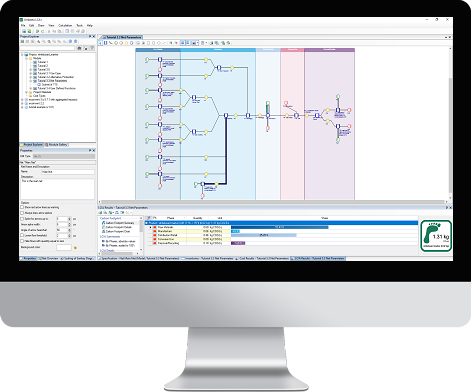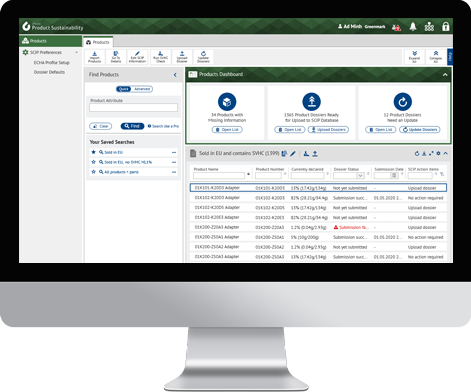What is an Environmental Management System?
Approach and standards
The term environmental management system refers to a holistic and strategic framework with the introduction of which companies commit themselves to higher quality standards in the areas of eco-efficiency and eco-effectiveness as well as environmental protection.
The two most significant environmental management systems are the Eco-Management and Audit Scheme and ISO 14001. These systems consist of many different subsystems. Among them are pollution control and waste management.
Benefits for companies
Implementing corporate environmental management successfully is a challenging task in any company.
But the effort is worthwile: Establishing an environmental management system, for example certified to ISO 14001 or EMAS, leads to a clear competitive advantage nowadays, since various stakeholders expect companies not only to commit themselves to sustainability, but also to implement environmental protection operationally.
Central Elements of Environmental Management
Regardless of the standard chosen, all environmental management systems have very similar key elements:
- Definition of environmental goals and strategies to reach them
- Quantification and evaluation of operational environmental performance
- Consideration of the entire life cycle of products (upstream and downstream environmental impacts)
- Planning, execution and control of tangible improvement measures

Environmental Management Standards
Eco-Management and Audit Scheme (EMAS)
Developed by the EU, EMAS is a system that organizations can use to improve their environmental performance. The following requirements apply in order to obtain an EU label:
- Continuous improvement of environmental performance
- Report on the achievement of environmental targets
- Validation by independent auditor (legal compliance)
ISO 14001
ISO 14001 is part of the globally recognized family of environmental management standards. The focus is on the continuous improvement process. Components are:
- General requirements
- Environmental policy
- Implementation and execution
- Control and corrective actions
- Evaluation by top management
How to measure environmental performance?
You cannot manage what you cannot measure.
Environmental indicators
In order to define achievable environmental goals, knowledge about the current environmental performance should be available as a first step. The relevant environmental aspects must be made measurable. Especially for the quantification of environmental performance and a life cycle approach, numerous data, figures and facts have to be evaluated.
In order to make the strategy for achieving the targets verifiable, specific environmental indicators must be derived. In the EMAS environmental management system, for example, these are divided into six key areas:
- Energy efficiency
- Material efficiency
- Water
- Waste
- Biological diversity
- Emissions
The first step is to check for all possible interfaces between a business and the environment. During the second step, these interfaces will be quantified.
Assessing environmental performance over the entire life cycle
Since the ISO 14001 revision in 2015, the quantification and evaluation of improvement measures is not only required on a site-specific basis, but also requires a life cycle perspective.
The aim is to consider not only the direct environmental impacts within the company, but also the indirect ones along the supply chain.







